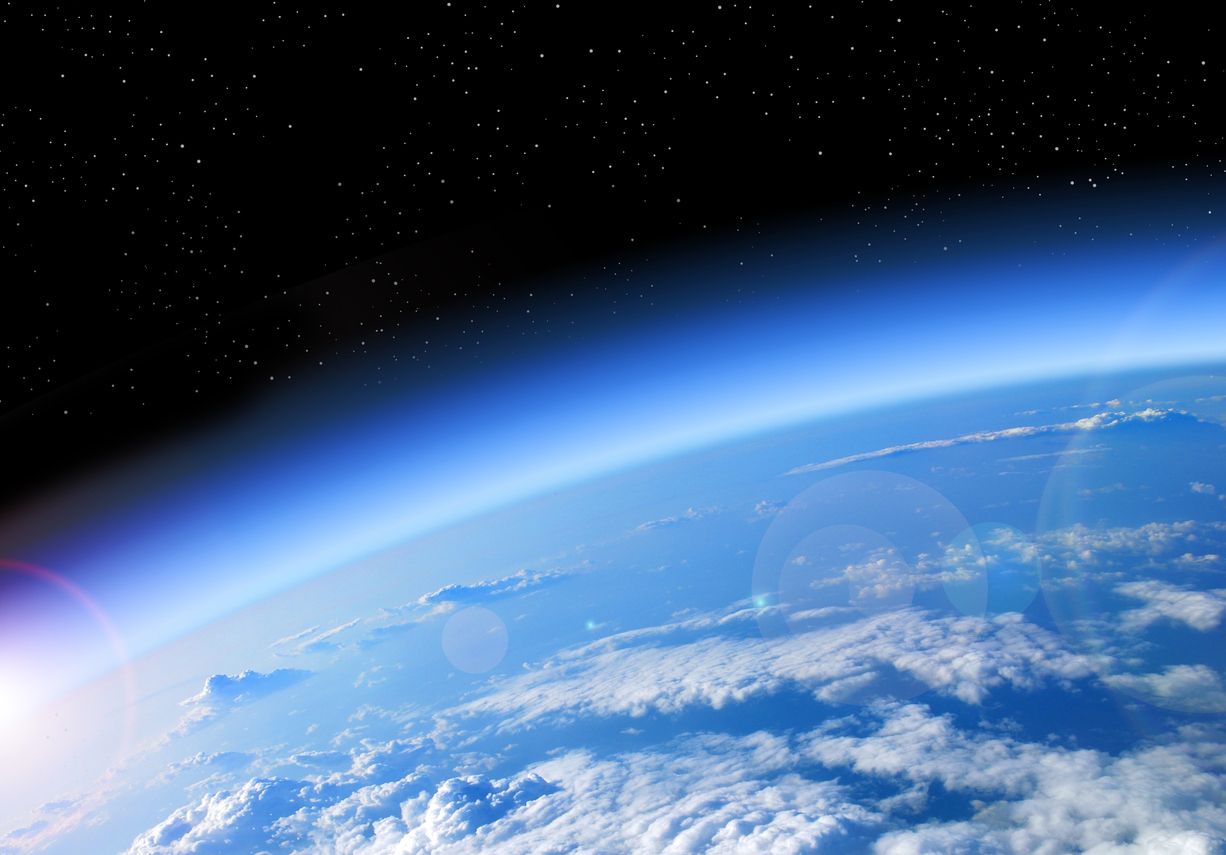The ozone layer begins to recover
nature·@arielpr·
0.000 HBDThe ozone layer begins to recover
About 460 million years ago, something strange began to happen 50 kilometers above the surface of the Earth. The oxygen in the atmosphere, thanks to solar radiation, began to give rise to a gas called ozone, which began to form a layer around the planet Earth. Some 120 million years later, this layer was thick enough to absorb the harmful radiation from the Sun and allow living beings to begin to colonize the land, which until now had been limited to living in the safe environment of the ocean. <center></center> Many millions of years later, the industrial and technological activity of a certain species, the human being, began to seriously degrade planetary ecosystems. At the same time, the emission of greenhouse gases that cause the global increase in temperatures (climate change) along with the destruction of the ozone layer began to worry scientists and governments around the world. However, now, for the first time, scientists have shown, through direct satellite observations of the ozone hole, that levels of ozone-depleting gases are decreasing. It seems that the international ban on chemicals containing chlorofluorocarbons, known by its acronym CFC, has borne fruit: the deterioration of the ozone layer during the Antarctic winter has been reduced by 20% compared to 2005, the first year Chlorine and ozone measurements were made by NASA's Aura satellite. At least, this has been confirmed by scientists in a study published by the journal Geophysical Research Letters. "We see very clearly that the amount of chlorine in CFCs is decreasing in the hole in the ozone layer and that, as a consequence, ozone wear is decreasing," according to lead author Susan Strahan, atmospheric scientist at the Space Flight Center Goddard of NASA in Greenbelt, Maryland. Previous studies have used statistical analyzes of changes in the size of the ozone hole to confirm that ozone depletion is slowing down. But this study is the first to use measures of chemical composition within the ozone hole to confirm that ozone depletion is not only decreasing, but that the decrease is caused by the decrease in CFCs. The change in ozone levels over Antarctica from the beginning to the end of the austral winter, from the beginning of July to mid-September, was calculated every year between 2005 and 2016. "During this period, Antarctic temperatures are always The rate of destruction of ozone depends mainly on how much chlorine there is, "the researchers said in the study. Thus, the scientists observed how less ozone is being lost, but they needed to know if the decrease in CFCs was responsible. When ozone destruction occurs, chlorine is found in many molecular forms, most of which are not measured. But after chlorine has destroyed almost all the available ozone, it reacts with methane to form hydrochloric acid, a gas that can be measured. Nitrous oxide is a long-lasting gas that behaves like CFCs in much of the stratosphere. CFCs are decreasing at the surface, but nitrous oxide does not. If CFCs in the stratosphere are decreasing, over time, less chlorine should be measured for a given nitrous oxide value. When comparing measurements of hydrochloric acid and nitrous oxide each year, it was determined that total chlorine levels decreased on average by about 0.8 percent per year. "But we still do not see a clear decrease in the size of the ozone hole because that is controlled mainly by the temperature, which varies greatly from one year to the next," the researchers warn. Far from total recovery Despite the encouraging news, the damage inflicted on the ozone layer is not so easy to repair. The hole in the ozone layer should continue to regenerate, but full recovery will take decades. Looking ahead, the Antarctic ozone hole should continue to recover gradually as CFCs leave the atmosphere, but full recovery will take decades. "CFCs have a lifespan of 50 to 100 years, so they remain in the atmosphere for a long time," according to Anne Douglass, atmospheric scientist and co-author of the study. "As far as the ozone hole is concerned, we are calculating for the 2060s or 2080s. And even then, there could be a small hole." What are CFCs? CFCs are long-lived chemical compounds that eventually rise to the stratosphere, where they are separated by ultraviolet radiation from the Sun, releasing chlorine atoms that destroy ozone molecules. Stratospheric ozone protects life on the planet by absorbing the potentially harmful ultraviolet radiation that can cause skin cancer and cataracts, suppress the immune system and damage the life of plants. Finally, if the ozone layer is sufficiently damaged, life on Earth would simply not be possible. Two years after the discovery of the hole in the ozone layer in Antarctica in 1985, the nations of the world signed the Montreal Protocol, on substances that deplete the ozone layer, which regulated compounds that deplete the ozone layer. Reforms subsequent to the Montreal Protocol completely eliminated CFC production. ----------------------- Reference: <a href="onlinelibrary.wiley.com/doi/10.1002/2017GL074830/abstract">Susan E. Strahan, Anne R. Douglas. 'Decline in Antarctic Ozone Depletion and Lower Stratospheric Chlorine Determined From Aura Microwave Limb Sounder Observations'. DOI: 10.1002/2017GL074830</a> Check this post: <a href="https://steemit.com/steemit/@arielpr/how-i-ve-been-scammed-and-lost-all-i-earned-here">How I've been scammed and lost all I earned here</a> <center></center>
👍 theloneword, shehzad,